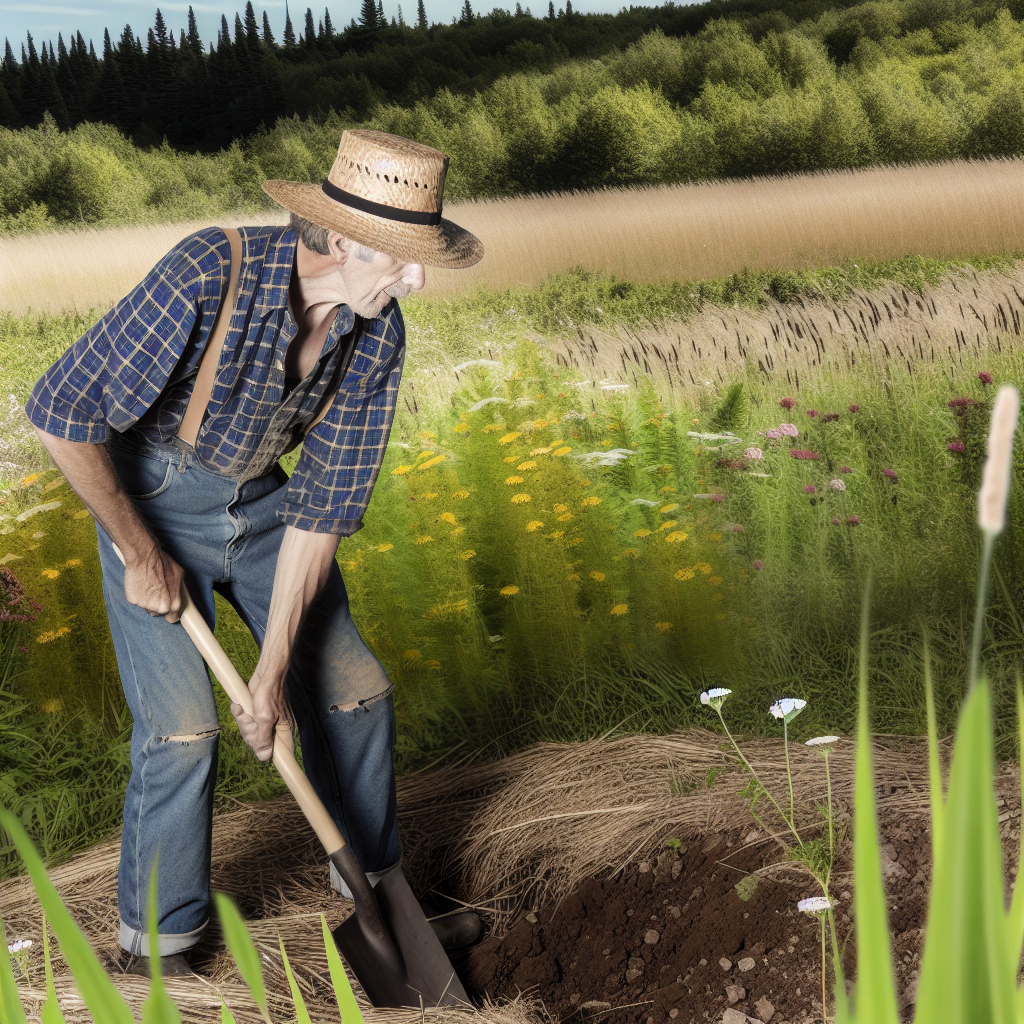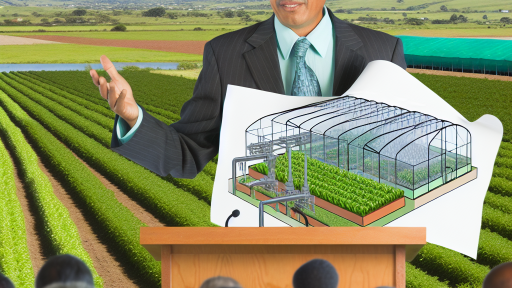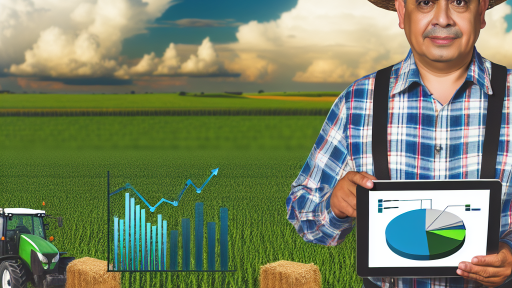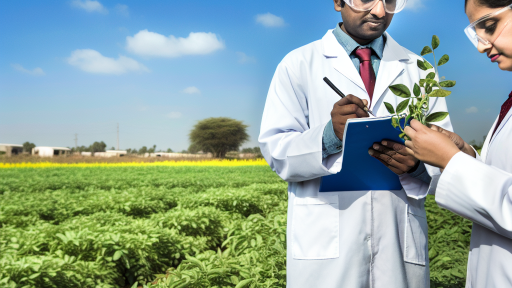Introduction to Wildlife Conservation Regulations in Farming
Wildlife conservation is essential for maintaining ecological balance.
Farmers play a crucial role in protecting wildlife habitats.
Regulations help guide their practices effectively.
Additionally, these laws promote sustainable agricultural methods.
They also help ensure the long-term viability of diverse species.
Key Objectives of Wildlife Conservation Regulations
The primary aim is to protect endangered species.
Another objective is to preserve natural ecosystems.
Moreover, regulations focus on reducing human-wildlife conflict.
These aims benefit both wildlife and farming communities.
Types of Regulations Affecting Farmers
Various regulations govern farming and wildlife conservation.
Land use policies often dictate how land can be managed.
Water management regulations impact irrigation practices.
Additionally, pesticide usage is heavily regulated.
This ensures that chemical applications do not harm wildlife.
Benefits of Compliance with Conservation Regulations
Compliance leads to healthier ecosystems on farms.
Transform Your Agribusiness
Unlock your farm's potential with expert advice tailored to your needs. Get actionable steps that drive real results.
Get StartedIt supports biodiversity and encourages sustainable practices.
Furthermore, it can enhance farm resilience against climate change.
Farmers may also gain access to funding and incentives.
Challenges Farmers Face in Adhering to Regulations
Understanding complex regulations can be daunting.
Farmers may encounter financial costs related to compliance.
Additionally, they face time constraints in implementing changes.
Furthermore, conflicting regulations can create confusion.
Future Directions for Wildlife Conservation in Farming
Innovative approaches can improve conservation efforts.
Collaborative strategies between farmers and conservationists are essential.
Moreover, embracing technology can enhance monitoring efforts.
Finally, community education can raise awareness of conservation practices.
Importance of Wildlife Conservation in Agricultural Practices
Connection Between Agriculture and Wildlife
Agriculture significantly impacts the surrounding wildlife and ecosystems.
Farmers depend on healthy ecosystems for pollination and pest control.
In return, sustainable farming practices can enhance local biodiversity.
This interdependence emphasizes the need for effective wildlife conservation.
Benefits of Wildlife Conservation in Farming
Wildlife conservation promotes ecological balance within agricultural systems.
It helps maintain soil fertility by supporting a variety of organisms.
This balance reduces the reliance on chemical fertilizers and pesticides.
Furthermore, it fosters resilience against pests and diseases.
Strategies for Implementing Wildlife Conservation
Farmers can implement various strategies to promote wildlife conservation.
Establishing buffer strips along waterways protects aquatic habitats.
Creating wildflower corridors supports pollinator populations.
Implementing crop rotation enhances soil health and biodiversity.
Encouraging natural predators can help manage pest populations sustainably.
Showcase Your Farming Business
Publish your professional farming services profile on our blog for a one-time fee of $200 and reach a dedicated audience of farmers and agribusiness owners.
Publish Your ProfileChallenges in Wildlife Conservation
Despite its importance, challenges still exist in wildlife conservation efforts.
Habitat loss from agricultural expansion threatens many species.
Additionally, pollution from farming can impact nearby ecosystems.
Farmers often face economic pressure that can deter conservation practices.
Policy and Community Involvement
Effective wildlife conservation requires collaboration among various stakeholders.
Government policies can incentivize farmers to adopt conservation measures.
Community involvement fosters awareness and support for wildlife initiatives.
Education programs can help farmers understand the benefits of conservation.
Key Wildlife Species Affected by Farming Activities
Birds
Farming activities widely impact various bird species.
Habitat loss occurs when fields replace natural environments.
Sensitive species, like meadowlarks and sparrows, face declines in populations.
Pesticides harm birds directly through poisoning and habitat degradation.
Mammals
Mammals also suffer from the expansion of agricultural land.
This transition destroys critical habitats for species such as foxes and deer.
Fences can obstruct migration routes, leading to isolation of populations.
Additionally, increased human activity can lead to more wildlife-human conflicts.
Reptiles and Amphibians
Reptiles and amphibians experience significant pressures due to farming practices.
Wetland drainage for agriculture eliminates breeding grounds.
Herbicides and pesticides negatively affect their health and reproductive success.
For instance, turtle populations suffer from habitat loss in cropland areas.
Pollinators
Pollinators play a vital role in agricultural success yet face threats.
The use of pesticides directly harms bees and other important species.
Loss of wildflower-rich habitats decreases food sources for these pollinators.
Farmers rely on healthy pollinator populations to ensure crop yields.
Fish
Fish populations are also affected by farming practices.
Runoff from fields introduces pollutants into nearby waterways.
This degradation alters ecosystems and harms aquatic species.
Moreover, sedimentation from erosion smothers fish spawning grounds.
Conservation Measures
Farmers can implement conservation measures to protect wildlife.
Buffer strips help filter runoff and provide wildlife habitat.
Additionally, integrated pest management reduces pesticide usage.
Planting cover crops improves soil health and enhances biodiversity.
Explore Further: Farmers’ Guide to Climate Legislation Compliance
Overview of International Regulations on Wildlife Conservation in Agriculture
Importance of Wildlife Conservation
Wildlife conservation plays a crucial role in ecological balance.
It supports biodiversity essential for healthy ecosystems.
Moreover, it prevents the loss of species that benefit agriculture.
Healthy wildlife populations contribute to pest control and pollination.
Global Regulatory Frameworks
International regulations establish guidelines for wildlife conservation.
The Convention on Biological Diversity (CBD) is a significant treaty.
It aims to promote sustainable development while protecting biodiversity.
Showcase Your Farming Business
Publish your professional farming services profile on our blog for a one-time fee of $200 and reach a dedicated audience of farmers and agribusiness owners.
Publish Your ProfileAdditionally, the Ramsar Convention focuses on wetland conservation.
These frameworks facilitate cooperation among countries for conservation efforts.
Regional Agreements and Protocols
Various regions implement specific agreements to enhance conservation efforts.
The European Union enforces the Birds and Habitats Directives.
These directives aim to protect wild birds and natural habitats.
In Africa, the African Convention on Conservation of Nature guides member states.
It emphasizes sustainable use of natural resources while conserving wildlife.
Implementation at National Levels
Countries adopt international regulations into national law.
This process involves creating legal frameworks for wildlife protection.
For instance, the Endangered Species Act in the United States safeguards threatened species.
Individual countries also establish protected areas for wildlife conservation.
These efforts vary based on regional biodiversity and threats.
Challenges in Regulation Enforcement
Enforcement of wildlife conservation regulations faces numerous obstacles.
Limited funding hampers effective implementation in many regions.
Additionally, political will varies among countries impacting compliance.
Moreover, illegal wildlife trade undermines conservation efforts significantly.
Communities may lack awareness of the importance of conservation laws.
Future Directions in Wildlife Conservation
Innovative approaches are essential to enhance conservation efforts in agriculture.
Integrating traditional knowledge with modern practices shows promise.
Furthermore, engaging farmers in conservation initiatives is vital.
Education and awareness campaigns can foster community involvement.
Lastly, partnerships between governments and NGOs can strengthen regulatory impact.
Find Out More: Long-Term Benefits Of Conservation Programs For Farmers
National Policies and Legislation on Wildlife Protection in Farming
Understanding Wildlife Protection Regulations
Wildlife protection regulations play a critical role in farming practices.
These rules aim to preserve biodiversity and maintain ecological integrity.
Farmers must comply with these regulations to protect endangered species.
Key Regulatory Frameworks
National governments establish frameworks for wildlife protection in agriculture.
In the United States, the Endangered Species Act serves as a cornerstone law.
This act seeks to protect threatened and endangered species across the nation.
Similar laws exist in other countries, reinforcing global conservation efforts.
Incentives for Compliance
Governments often provide incentives to encourage compliance with wildlife regulations.
Financial support can help farmers adopt wildlife-friendly practices.
Tax credits and grants are common tools used to promote sustainable farming.
Through these initiatives, farmers can balance productivity with conservation.
Partnerships with Conservation Organizations
Collaboration with conservation groups can enhance wildlife protection efforts.
Organizations like the World Wildlife Fund partner with farmers on sustainable practices.
These partnerships facilitate education and resource sharing.
They also help farmers implement conservation measures effectively.
Monitoring and Reporting Requirements
Farmers must adhere to strict monitoring and reporting protocols.
Regular assessments of wildlife populations are often mandated.
Showcase Your Farming Business
Publish your professional farming services profile on our blog for a one-time fee of $200 and reach a dedicated audience of farmers and agribusiness owners.
Publish Your ProfileThis ensures that farming activities do not adversely impact local ecosystems.
Non-compliance can lead to penalties and loss of government support.
Future Directions in Wildlife Conservation Regulations
As environmental challenges grow, regulations will likely evolve.
Increased public awareness may drive more stringent laws and practices.
Integrating technology into farming can support compliance with wildlife regulations.
Ultimately, a collaborative approach will enhance wildlife conservation in agriculture.
Explore Further: Key Food Safety Regulations Every Farmer Should Know
Best Practices for Farmers to Comply with Wildlife Conservation Regulations
Understanding Wildlife Conservation Regulations
Wildlife conservation regulations protect vulnerable species and habitats.
Farmers must familiarize themselves with these regulations.
These laws vary by region, so local consultation is essential.
Implementing Wildlife-Friendly Farming Techniques
Utilizing wildlife-friendly farming techniques can enhance biodiversity.
Crop rotation encourages a healthier ecosystem on your farm.
Cover crops reduce erosion and provide habitats for beneficial insects.
Maintaining Natural Habitats
Preserving natural habitats on your property benefits local wildlife.
Leave buffer strips along waterways to protect aquatic species.
Additionally, establish hedgerows to provide shelter and food sources.
Participating in Conservation Programs
Join local and national conservation programs for better compliance.
Programs often provide financial incentives for sustainable practices.
Moreover, they offer resources and guidance about wildlife conservation.
Educating Yourself and Your Community
Stay informed about wildlife conservation through workshops and seminars.
Share knowledge with fellow farmers to promote cooperative efforts.
Community involvement results in broader impacts on conservation strategies.
Monitoring Wildlife Activity on Your Farm
Regularly monitor wildlife populations and their habitats on your farm.
This can help identify problems and adapt practices accordingly.
Consider utilizing cameras to observe wildlife patterns and needs.
Collaborating with Local Conservation Organizations
Building partnerships with conservation organizations is beneficial.
These organizations can provide valuable advice and support.
In addition, they can assist in implementing effective conservation practices.
Delve into the Subject: Policy Strategies for Climate-Smart Agriculture

Impact of Non-Compliance
Legal Consequences
Non-compliance with wildlife conservation regulations can lead to significant legal repercussions.
Farmers face hefty fines for violations of these regulations.
In severe cases, they may lose permits necessary for farming operations.
Additionally, legal action may result in lengthy court battles.
This not only drains resources but also damages reputations.
Environmental Consequences
The environmental impact of non-compliance can be severe and far-reaching.
Disregarding conservation laws can lead to habitat destruction.
This, in turn, threatens endangered species and destabilizes ecosystems.
Moreover, it can contribute to soil degradation and water contamination.
Consequently, the overall biodiversity in farming areas suffers greatly.
Long-term Impacts
Beyond immediate legal and environmental issues, farmers might face long-term consequences.
Showcase Your Farming Business
Publish your professional farming services profile on our blog for a one-time fee of $200 and reach a dedicated audience of farmers and agribusiness owners.
Publish Your ProfilePersistent non-compliance can alter land productivity over time.
Declining soil health ultimately affects crop yields.
This may lead to economic instability for farming families.
Additionally, public perception of farming practices can shift negatively.
Therefore, maintaining compliance is essential for sustainable farming.
Case Studies: Successful Integration of Wildlife Conservation in Farming
Farm Biodiversity Projects
Many farmers are adopting biodiversity projects on their land.
These initiatives enhance the ecosystem and improve crop yields.
For example, the Riverbend Organic Farm in Ohio promotes bird habitats.
This practice supports pest control through natural predators.
As a result, the farm sees less damage to crops and reduced pesticide use.
Agroforestry Practices
Agroforestry involves integrating trees into farming systems.
This practice provides shade and habitat for wildlife.
The Green Acres Farm employs this technique successfully.
They grow fruit trees alongside vegetable crops.
This approach boosts the farm’s biodiversity while improving soil health.
Community Engagement Programs
Engaging the community can lead to effective conservation efforts.
The Nature Learning Farm in California has initiated workshops.
These sessions educate local farmers about wildlife-friendly practices.
By sharing knowledge, the farm fosters a culture of conservation.
This collaboration increases participation in local wildlife protection efforts.
Innovative Water Management Techniques
Efficient water management can greatly benefit wildlife.
The Watershed Farm uses rainwater harvesting systems.
This method ensures crops receive adequate moisture while preserving local streams.
Moreover, it creates habitats for aquatic species.
The farm’s holistic approach promotes sustainability and biodiversity.
Case Examples of Successful Integration
- The Maple Ridge Farm adopted organic farming techniques.
- They have seen a resurgence in native pollinator species.
- The Harmony Hill Farm implemented rotational grazing, benefiting both livestock and local fauna.
- These efforts have led to improved soil health and farm productivity.
Future Trends in Wildlife Conservation Regulations and Farming Practices
Introduction to Future Trends
The landscape of wildlife conservation is evolving rapidly.
Farmers increasingly recognize the importance of biodiversity.
Moreover, regulations are adapting to promote sustainable practices.
Emerging Farming Techniques
Innovative farming techniques are gaining traction.
For instance, agroforestry integrates trees with crops and livestock.
This method enhances biodiversity while providing economic benefits.
Additionally, regenerative agriculture focuses on restoring soil health.
Such techniques ultimately foster a harmonious relationship with nature.
Integration of Technology
Technology plays a significant role in modern farming practices.
Drone technology assists in monitoring wildlife habitats effectively.
Furthermore, precision farming optimizes resource use and minimizes waste.
These technological advancements support conservation efforts.
Policy Changes and Incentives
Governments are revising regulations to enhance conservation efforts.
They are offering incentives for farmers to adopt eco-friendly practices.
Furthermore, policies now emphasize biodiversity and ecosystem services.
Showcase Your Farming Business
Publish your professional farming services profile on our blog for a one-time fee of $200 and reach a dedicated audience of farmers and agribusiness owners.
Publish Your ProfileFarmers can benefit financially by engaging in conservation activities.
Collaborative Approaches
Collaboration between conservationists and farmers is on the rise.
Joint initiatives focus on sharing knowledge and resources.
Such partnerships improve sustainability in agricultural practices.
Moreover, they ensure that wildlife habitats are protected effectively.
Public Awareness and Engagement
Public awareness of wildlife conservation issues is increasing.
This prompts consumers to demand sustainable farming products.
Consequently, farmers are more motivated to implement conservation practices.
Community engagement also fosters a culture of conservation.
Promising Future for Conservation in Farming
The future of wildlife conservation regulations in farming looks promising.
By embracing innovative practices, technology, and collaboration, farmers can contribute significantly.
These efforts enhance biodiversity while ensuring food security for all.
Additional Resources
Regulatory and Other Agriculture Related Resources from Federal …




